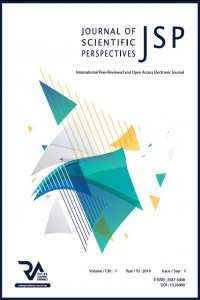Abstract
References
- ABI-HACHEM, R.N., ZINE, A., VAN DE WATER, T.R., 2010, The injured cochlea as a target for inflammatory processes, initiation of cell death pathways and application of related otoprotectives strategies, Recent Pat CNS Drug Discov, 5(2):147-163. ALI, I., WANI, W.A., SALEEM, K., HAQUE, A., 2013, Platinum compounds: a hope for future cancer chemotherapy, Anticancer Agents Med Chem, 13(2):296-306. ALLEN, G.C.,TIU, C., KOIKE, K., RITCHEY, A.K., KURS-LASKY, M., WAX, M.K., 1998, Transient-evoked otoacoustic emissions in children after cisplatin chemotherapy, Otolaryngol Head Neck Surg, 118(5):584-588. ALTUN, Z., OLGUN, Y., ERCETIN, P., AKTAS, S., KIRKIM, G., SERBETCIOGLU, B., OLGUN, N., GUNERI, E.A., 2014, Protective effect of acetyl-l-carnitine against cisplatin ototoxicity: role of apoptosis-related genes and pro-inflammatory cytokines, Cell Prolif, 47(1):72-80. ALTUN, Z., PAMUKOĞLU, A., OLGUN, Y., AKTAŞ, S., ÇETINAYAK, H.O., KıRKıM, G., GÜNERI, E.A., ERÇETIN, P., OLGUN, N., 2016, Acetyl-L-Carnitine protects HEI-OC1 auditory cells from radiation and cisplatin induced toxicity, Int J Clin Exp Med, 9(7):13605-13614. ALTUN, Z.S., GUNES, D., AKTAS, S., ERBAYRAKTAR, Z., OLGUN, N., 2010, Protective effects of Acetyl-L-carnitine on cisplatin cytotoxicity and oxidative stress in neuroblastoma, Neurochem Res, 35(3):437-443.ARORA, R., THAKUR, J.S., AZAD, R.K., MOHINDROO, N.K., SHARMA, D.R., SEAM, R.K., 2009, Cisplatin-based chemotherapy: Add high-frequency audiometry in the regimen, Indian J Cancer, 46(4):311-317. AVAN, A., POSTMA, T.J., CERESA, C., CAVALETTI, G., GIOVANNETTI, E., PETERS, G.J., 2015, Platinum-induced neurotoxicity and preventive strategies: past, present, and future, Oncologist, 20(4):411-432. BANFI, B., MALGRANGE, B., KNISZ, J., STEGER, K., DUBOIS-DAUPHIN, M., KRAUSE, K.-H., 2004, NOX3, a superoxide-generating NADPH oxidase of the inner ear, Journal of Biological Chemistry, 279(44):46065-46072. BAYRAK, F., OLGUN, Y., ALTUN, Z., Ototoksisite ve Kök Hücre Uygulamaları, İzmir Eğitim ve Araştırma Hastanesi Tıp Dergisi:47. BHANDARE, N., ANTONELLI, P.J., MORRIS, C.G., MALAYAPA, R.S., MENDENHALL, W.M., 2007, Ototoxicity after radiotherapy for head and neck tumors, Int J Radiat Oncol Biol Phys, 67(2):469-479. BIEDLER, J.L., ROFFLER-TARLOV, S., SCHACHNER, M., FREEDMAN, L.S., 1978, Multiple neurotransmitter synthesis by human neuroblastoma cell lines and clones, Cancer Res, 38(11 Pt 1):3751-3757. BOLLIMUNTHA, S., SINGH, B.B., SHAVALI, S., SHARMA, S.K., EBADI, M., 2005, TRPC1-mediated inhibition of 1-methyl-4-phenylpyridinium ion neurotoxicity in human SH-SY5Y neuroblastoma cells, J Biol Chem, 280(3):2132-2140. BOULIKAS, T., VOUGIOUKA, M., 2003, Cisplatin and platinum drugs at the molecular level. (Review), Oncol Rep, 10(6):1663-1682
Abstract
Ototoxicity is based on inner ear dysfunction creating hearing loss, balance disorder or both symptoms depending on the drug or chemical agent.
Genetic and nongenetic risk factors, in addition to dose and time, play important roles in cisplatin ototoxicity.Although the changes firstly begin from first line of outer hairy cells on the Corti organ in the inner ear and then progress. Though the effect on the spiral ganglion and stria vascularis in addition to the Corti organ are well-defined, the molecular mechanisms that cause hearing loss are not fully understood. Cellular and molecular mechanisms and particularly apoptotic mechanisms explain cisplatin cytotoxicity leading to cochlea damage. DNA damage induced by cisplatin and ROS production seem to be mainly responsible for cisplatin toxicity.
Children treated with cisplatin are at risk of early or late hearing loss which could affect learning, communication, school performance, social communication and general quality of life. For this reason, many protective agents are used with cisplatin without changing its antitumoral efficiency. Studies of compounds to prevent ototoxicity may provide compounds for use in routine clinical practice and prevent one of the major dose-limiting side effects of cisplatin therapy, which will increase treatment efficacy and improve patient quality of life.
References
- ABI-HACHEM, R.N., ZINE, A., VAN DE WATER, T.R., 2010, The injured cochlea as a target for inflammatory processes, initiation of cell death pathways and application of related otoprotectives strategies, Recent Pat CNS Drug Discov, 5(2):147-163. ALI, I., WANI, W.A., SALEEM, K., HAQUE, A., 2013, Platinum compounds: a hope for future cancer chemotherapy, Anticancer Agents Med Chem, 13(2):296-306. ALLEN, G.C.,TIU, C., KOIKE, K., RITCHEY, A.K., KURS-LASKY, M., WAX, M.K., 1998, Transient-evoked otoacoustic emissions in children after cisplatin chemotherapy, Otolaryngol Head Neck Surg, 118(5):584-588. ALTUN, Z., OLGUN, Y., ERCETIN, P., AKTAS, S., KIRKIM, G., SERBETCIOGLU, B., OLGUN, N., GUNERI, E.A., 2014, Protective effect of acetyl-l-carnitine against cisplatin ototoxicity: role of apoptosis-related genes and pro-inflammatory cytokines, Cell Prolif, 47(1):72-80. ALTUN, Z., PAMUKOĞLU, A., OLGUN, Y., AKTAŞ, S., ÇETINAYAK, H.O., KıRKıM, G., GÜNERI, E.A., ERÇETIN, P., OLGUN, N., 2016, Acetyl-L-Carnitine protects HEI-OC1 auditory cells from radiation and cisplatin induced toxicity, Int J Clin Exp Med, 9(7):13605-13614. ALTUN, Z.S., GUNES, D., AKTAS, S., ERBAYRAKTAR, Z., OLGUN, N., 2010, Protective effects of Acetyl-L-carnitine on cisplatin cytotoxicity and oxidative stress in neuroblastoma, Neurochem Res, 35(3):437-443.ARORA, R., THAKUR, J.S., AZAD, R.K., MOHINDROO, N.K., SHARMA, D.R., SEAM, R.K., 2009, Cisplatin-based chemotherapy: Add high-frequency audiometry in the regimen, Indian J Cancer, 46(4):311-317. AVAN, A., POSTMA, T.J., CERESA, C., CAVALETTI, G., GIOVANNETTI, E., PETERS, G.J., 2015, Platinum-induced neurotoxicity and preventive strategies: past, present, and future, Oncologist, 20(4):411-432. BANFI, B., MALGRANGE, B., KNISZ, J., STEGER, K., DUBOIS-DAUPHIN, M., KRAUSE, K.-H., 2004, NOX3, a superoxide-generating NADPH oxidase of the inner ear, Journal of Biological Chemistry, 279(44):46065-46072. BAYRAK, F., OLGUN, Y., ALTUN, Z., Ototoksisite ve Kök Hücre Uygulamaları, İzmir Eğitim ve Araştırma Hastanesi Tıp Dergisi:47. BHANDARE, N., ANTONELLI, P.J., MORRIS, C.G., MALAYAPA, R.S., MENDENHALL, W.M., 2007, Ototoxicity after radiotherapy for head and neck tumors, Int J Radiat Oncol Biol Phys, 67(2):469-479. BIEDLER, J.L., ROFFLER-TARLOV, S., SCHACHNER, M., FREEDMAN, L.S., 1978, Multiple neurotransmitter synthesis by human neuroblastoma cell lines and clones, Cancer Res, 38(11 Pt 1):3751-3757. BOLLIMUNTHA, S., SINGH, B.B., SHAVALI, S., SHARMA, S.K., EBADI, M., 2005, TRPC1-mediated inhibition of 1-methyl-4-phenylpyridinium ion neurotoxicity in human SH-SY5Y neuroblastoma cells, J Biol Chem, 280(3):2132-2140. BOULIKAS, T., VOUGIOUKA, M., 2003, Cisplatin and platinum drugs at the molecular level. (Review), Oncol Rep, 10(6):1663-1682
Details
| Primary Language | English |
|---|---|
| Subjects | Health Care Administration |
| Journal Section | Health Sciences |
| Authors | |
| Publication Date | May 1, 2018 |
| Published in Issue | Year 2018 Volume: 2 Issue: 2 |


